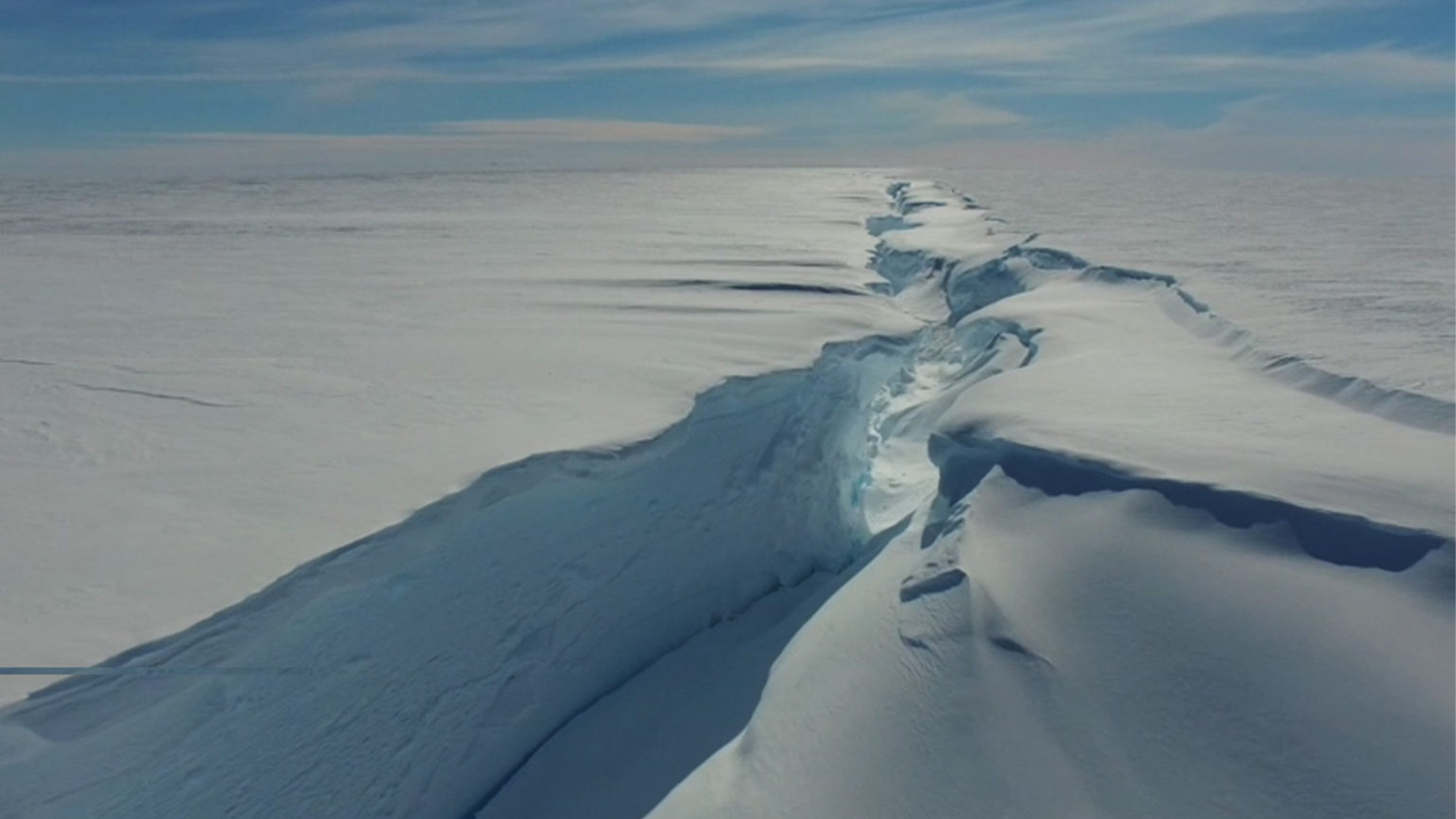

There’s a new rogue iceberg floating around Antarctica. The almost 600 square-mile iceberg broke off of the Brunt Ice Shelf on January 22, according to scientists at British Antarctic Survey (BAS). Researchers at BAS’ Halley Research Station have been tracking the ice shelf’s behavior for several years.
The Brunt Ice Shelf itself is close to 500 feet thick. It “calved” when a crack called Chasm-1 that has naturally been developing over the last few years extended across the whole shelf, causing the new iceberg to break free.
[Related: An East Antarctic ice shelf has collapsed.]
“This calving event has been expected and is part of the natural behaviour of the Brunt Ice Shelf. It is not linked to climate change,” said Dominic Hodgson, a glaciologist with BAS, in a statement. “Our science and operational teams continue to monitor the ice shelf in real-time to ensure it is safe, and to maintain the delivery of the science we undertake at Halley”.
While the area of the ice shelf that houses the research station is unaffected by recent calving events, Brunt has a complex geological structure and the impact of calving events remain unpredictable.
The first signs of changes in Chasm-1 were spotted by satellites in 2012. It began to widen, and the BAS moved Halley Research Station 14 miles inland in 2016. By the following year, BAS began only deploying staff to the station from November to March (Antarctic summer) the following year.
“Our glaciologists and operations teams have been anticipating this event. Measurements of the ice shelf are carried out multiple times a day using an automated network of high-precision GPS instruments that surround the station,” said BAS Director Jane Francis, in a statement. “These measure how the ice shelf is deforming and moving, and are compared to satellite images from ESA, NASA, and the German satellite TerraSAR-X. All data are sent back to Cambridge for analysis, so we know what is happening even in the Antarctic winter – when there are no staff on the station, it is dark for 24 hours, and the temperature falls below minus 50 degrees C (or -58F).”
[Related: Giant ice cracks in Antarctica stymie important research for the second winter in a row.]
BAS says the changes in the Brunt Ice Shelf are a natural process and that there isn’t any connection to recent rapid calving events on Larsen C Ice Shelf. This shelf had extensive surface meltwater when an iceberg the size of Luxembourg broke off of the ice shelf in 2017, but still no evidence that climate change has played a significant role.
Ted Scambos, a senior research scientist at the University of Colorado at Boulder, told The Washington Post that while the iceberg “is a huge mass of ice, about 500 billion tons … it is far from being the largest iceberg ever seen, which rivaled Long Island. These large iceberg calvings, sometimes as large as a small state, are spectacular. But they’re just part of how Antarctica’s ice sheet works. Most of the time they have nothing to do with climate change.”
Currently, BAS has 21 staff at the station who will maintain power supplies and facilities until February 6.